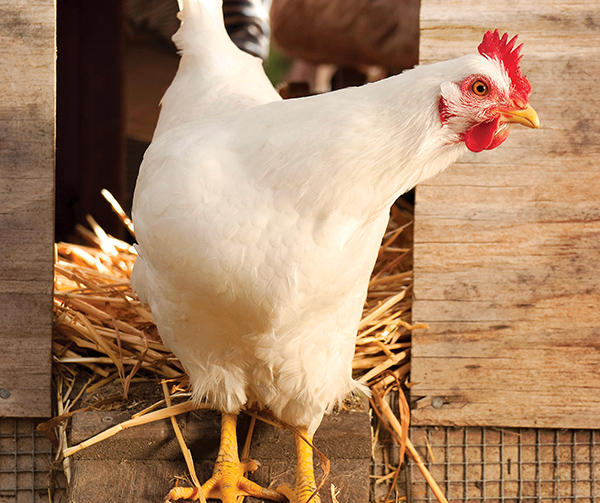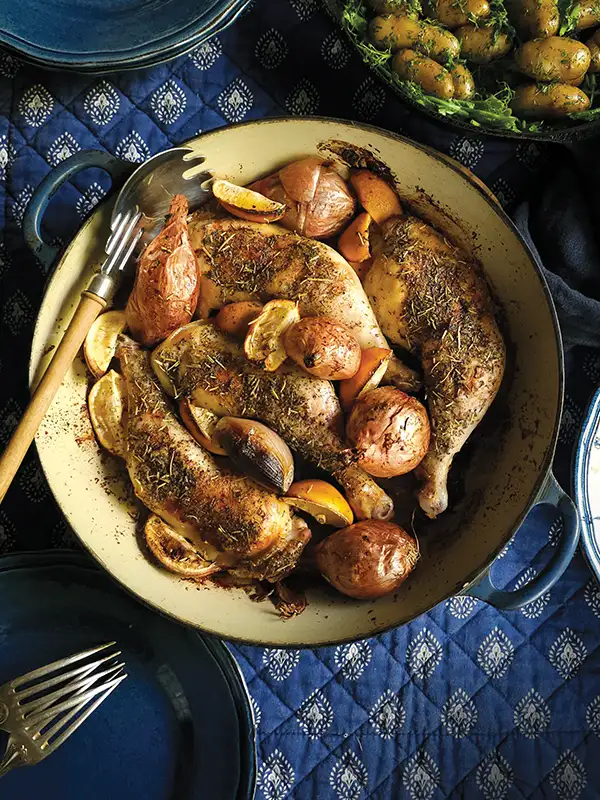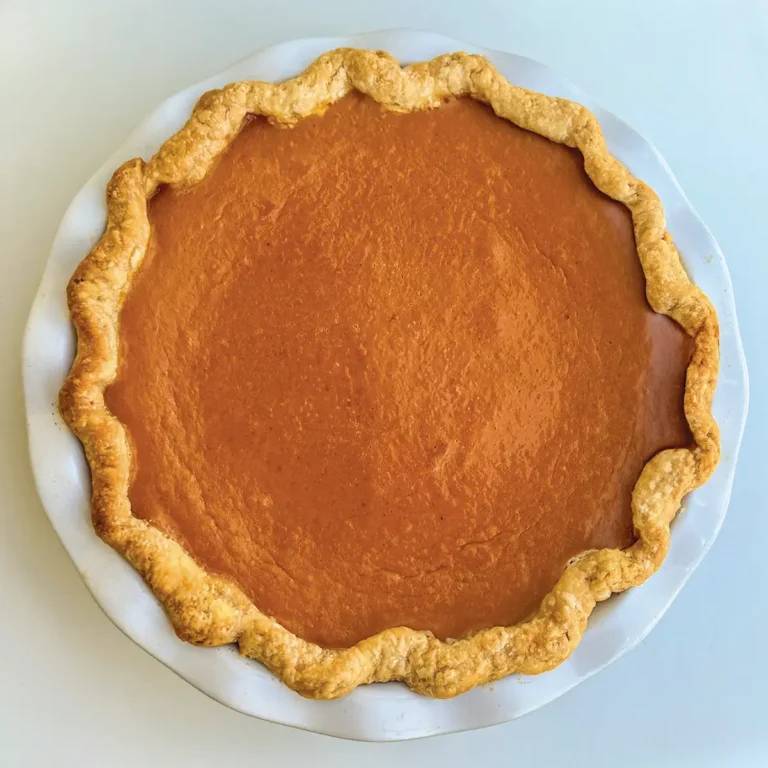Backyard Chickens in a Santa Barbara Garden
[Photography by Fran Collin]
Chickens came into our lives over 20 years ago after we did a home exchange in the Cotswolds, England, with a couple who kept chickens in a backyard coop, surrounded by open fields and ancient dry-stacked rock walls. Our children, who were in elementary school at the time, were put in charge of collecting eggs in the morning and making sure the back door to the coop was closed at dusk, so Mr. Fox wouldn’t sneak in and cause a ruckus as the chickens slept.
When we returned to Santa Barbara after two weeks of chicken heaven, I vowed that someday, somehow, I would find a way to keep a few chickens in our backyard. A few years later we moved to an unfinished house, and were lucky enough to be able to install an organic garden and a chicken coop where the plans had called for a tennis court and a pool.
We hired a local landscape architect to design the garden space, which included plans for the coop and compost bins, and we were on our way. We learned that chickens are an integral part of an organic garden, an element of a cycle beginning with kitchen scraps, which are fed to the chickens and composted with their droppings, and later they are returned to the garden in the form of rich soil for the garden beds. In turn, the garden gives back to the kitchen the herbs and vegetables we have grown over the years.
Is It Legal to Keep Chickens in Santa Barbara?
Chickens are easy to keep and, as long as a few rules are followed, they are legal within Santa Barbara city limits. The main rule is NO ROOSTERS—although, until the devastating Tea Fire last November, I used to hear a rogue rooster in the early mornings somewhere in Sycamore Canyon. I must say I miss him. According to the Santa Barbara City Municipal Codes you can keep up to two chickens as pets and beyond that all building codes, zoning codes and animal control codes must be followed. Each city can have slightly different ordinances, so check your city’s municipal code before getting chickens.
We bought our first tiny and fuzzy baby chicks in the spring from Island Seed and Feed. We kept them in a large box in the garage, with a weighted screen over the top to keep out our curious cats and a light bulb for warmth, until they grew enough feathers to be put outside.
How Many Chickens to Keep?
We found that four chickens were plenty to keep our family supplied with a dozen, or more, delicious fresh eggs a week. Since then, we’ve happily kept up to four chickens at a time, with only a few roosters temporarily sneaking in. Our favorite breeds have been the Ameraucana, which lay the most beautiful blue green eggs, and the Buff Orpington, which are sweet, docile and lay brown eggs.
The males and females are indistinguishable when tiny, although in some breeds the hens and roosters are of different colors. The chicks are usually “sexed” when sold, meaning the breeders separate the males from the females before sending them to the stores, to try to guarantee only hens grow up, but occasionally “roosters happen.”
What To Do If You Get a Rooster?
When two of our favorite chicks, named Queen Elizabeth and Princess Di, started to crow at dawn at about 6 months old, La Cumbre Feed was helpful in putting us in contact with a farm where they were welcome. Over the years our chickens have been healthy and productive, and we’ve only lost a few, mostly to old age. When healthy, chickens can keep on laying and may live over 10 years.
How to Keep Your Backyard Chickens Safe
We house our chickens in a coop with a large, enclosed outside area attached to an interior roosting and egg-laying hutch, all built of redwood. There are as many styles for coops as there are for houses in Santa Barbara, although I have yet to see one with a red tiled roof.
Most coop designs can fit beautifully into almost any backyard, but an important element in building our coop was sheltering the chickens from predators. Mr. Fox may not be a problem in Santa Barbara, but Wile E. Coyote is, and I have even seen the occasional bobcat on the hillside outside our kitchen window. Raccoons have also been known to prey on chickens and will burrow under the coop or climb over most fences. The outside area of our coop is completely enclosed in heavy-duty chicken wire, buried about two feet into the ground to keep burrowing predators out. Chickens also need to be protected from red-tailed hawks overhead and guarded from predators that climb.
I don’t let them wander outside the safety of the coop. I know they would love to roam in the garden during the day and would keep it free of snails and other insects, but my garden is too open and accessible to the occasional stray dog and other animals that would love nothing more than an easy chicken dinner. Coyotes may be nocturnal, but I have seen them hunt in broad daylight.

Chickens are simple to take care of, with few needs beyond fresh water, a steady supply of chicken feed, an outdoor area to scratch around in and a protected indoor area to sleep and lay their eggs. Unlike our dogs, who seem to need constant attention, chickens never ask to be taken for a walk or have a tennis ball thrown, and they can be left for a few days with an automatic watering system and a food dispenser.
Our chickens’ water bowl is attached to a hose and has an automatic shut-off valve when it is full, and their food (organic lay pellets from Island Seed and Feed) is dispensed from a chicken feeder.
We also feed our chickens any kitchen vegetable scraps that would be thrown into the compost. They particularly love the seeds of any fruit or vegetable, and can’t seem to distinguish the seeds of a sweet pepper from a jalapeño. It’s satisfying to know that nothing is wasted, and that we are part of the cycle of life.
About once a month, especially when the rains come and it gets muddy, I toss a couple of bags of straw from La Cumbre Feed into the outside area. Nothing seems to make the chickens happier than scratching around in the straw looking for seeds and bugs and spreading it evenly throughout the coop.
Over the years our chickens have never failed to bring us the same pleasure as the ones we cared for in our home exchange in the Cotswolds so long ago. Our daughters have grown, married and had children of their own. Some chickens have died of old age, and a few have grown into roosters and been replaced by new fuzzy baby chicks.
Now I wander down to the garden with our 18-month-old granddaughter holding my hand, and I help her throw the compost into the coop and watch her squeal in delight at the chickens’ antics. And sometimes, when the stress of our crowded and mechanized world gets to me, I head out to the coop and just watch for a while, amazed at the peace and simplicity four backyard chickens can bring.
Getting Started with Your Baby Chicks
Where To Keep Your Chicks
You start your chicks off indoors in a brooder, which can be any type of container that will keep them clean, warm and safe. You can use a cardboard box, a rabbit cage or another type of container that will be easy to keep clean. Make sure it’s big enough that the chicks have plenty of room to move around in it. You might also put a stick or a piece of ½-inch dowel about 4 inches off the floor for a roost, which they will begin to use when they are a few weeks old.
Place several layers of paper towels in the bottom. You can switch to pine shavings or other types of litter after a couple weeks; before that they might mistake the litter for food. You’ll need to change the lining or litter every couple days or as soon as it gets dirty and damp.
Keep Them Warm
You can use a heat lamp or light bulb with a reflector above it to keep your chicks warm. The temperature should be approximately 95 degrees for the first week and then can be reduced by 5 degrees each week until the chickens get their feathers at about 5–8 weeks. To reduce the temperature, hang the light above the brooder and raise it to lower the temperature—or reduce the wattage of the bulb.
Food and Water
Place a feeder and a waterer in your brooder but not directly under the heat source. Replace the water once or twice a day. You might want to show them the water source when you put them into the brooder by dunking their beak into the water so they know exactly what and where it is. Give them a complete food such as chick crumbles or chick starter feed, and be sure to clean and refill their feeders often.
Caring for Your Chicks
Spend time with your chicks if you want them to bond with you. You can give them occasional treats by providing them with bugs or worms from your garden to play with and eat. Some chickens can even be trained to come when you call them. There is much to learn about raising and caring for chickens, so check out the books and online resources for lots of great information.
Resources
Local Sources for Feed, Supplies and Baby Chicks
Island Seed & Feed
29 S. Fairview Ave., Goleta
805 967-5262
They will have baby chicks in early March.
La Cumbre Feed
3652 Calle Real, Santa Barbara
805 687-1880
They will probably have baby chicks in early April.
Santa Ynez Feed & Mill
3532 Sagunto St., Santa Ynez
805 688-6404
They usually have baby chicks in March/April.
Farm Supply Co.
1920 N. Broadway, Santa Maria
805 922-2737
They usually have baby chicks throughout the spring.
Online Information
mypetchicken.com
backyardchickens.com
poultrybookstore.com
Santa Barbara Chicken Lovers Google Group:
groups.google.com/group/Sbchickenlove
Books
Storey’s Guide To Raising Chickens By Gail Damerow
How To Raise Poultry By Christine Heinrichs






